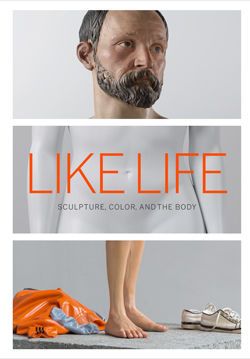Macarena of Miracles
Audrey Flack American
Not on view
Macarena of Miracles is one of a series of closely related works based on photographs, slides and postcards of polychromed sculptures of the weeping Madonna encountered by Flack during her travels to Spain in the early 1970s. In this photorealist painting, the famous sculpture Macarena Esperanza of the Basilica de la Macarena in Seville is depicted at half-length and in three-quarter profile. Most notable, however, is the elaborate detail with which Flack rendered the opulence of the figure’s dress and adornments, and also captured the sculpture’s signature crystal tears. Attributed at times to the seventeenth-century Spanish sculptor Luisa Roldán, called La Roldana (1652–1706), the sculpture appealed to Flack as the work of a historic woman artist.
New York-based Flack began her painting career in the 1950s by creating abstract works, in the wake of the practices of Jackson Pollock and Joseph Albers, the latter with whom she studied at Yale University. However, upon studying anatomy at the Art Students League in New York with Robert Beverly Hale, who was also the curator of American art at The Met, she found her calling in a more representational mode of painting. During the 1960s, she began to make paintings based on photographs reproduced in newspapers and magazines, appropriating found imagery in a manner akin to contemporary Pop artists, but with less irony and more pathos—a reflection of the personal tumults that the artist was experiencing as a woman and a mother. It was during this period that one of Flack’s daughters was diagnosed with autism, and the artist has often spoken of her resultant anguish and how it was formative in the development of the Macarena paintings. Flack found deeply resonant the sculptures of the sorrowful Madonnas that gazed down upon visitors from their niches in cathedrals in Spain. Although the sculpture in Seville has deep cultural and religious significance, Flack, who is not Catholic, nevertheless connected with the figure on a spiritual and humanistic plane: "Mary had also experienced a lot of sorrow and grief with her child; I identified with her. Now, I don’t feel that I am Mary, but she was probably a very suitable role model for me." [1]
The decision to photograph the sculpture and then create a painting based on that photograph was also a recuperative act. An exemplar of Spanish baroque art, the sculpture’s polychromy and elaborate ornamentation had however relegated the work, at the time of Flack’s encounter with it, to art history’s canonical margins. While its attribution has not been definitively established, Flack, in her writings and paintings has understood the sculpture to be the work of La Roldana. "One of the things I wanted to do in my painting was to restore the Macarena to the level of high art, to bring it back into the realm of a respected masterpiece," wrote Flack in a 1979 article on the images of Luisa Roldán. In her painting, Flack presents the figure vividly lit against a dark background, and further accentuates the drama of the setting through a palette that combines the heightened chromatic values of the sculpture’s original polychromy with the color spectrum of the photographic source for the painting. The technical virtuosity in the lavish details of every ornamental element, jewel, and teardrop becomes a painterly analog to the kind of consecrating adornment through the accrual of actual clothes and jewels that imbue the sculpture with spiritual power. The Macarena paintings would be pivotal in Flack’s oeuvre and anticipated her enduring engagement with the powerful female figure at the center of her painting and later sculptural practice.
[1] Lowery S. Sims, Saints and Other Angels: The Religious Paintings of Audrey Flack (New York: Cooper Union, 1986), unpaginated.
Due to rights restrictions, this image cannot be enlarged, viewed at full screen, or downloaded.


